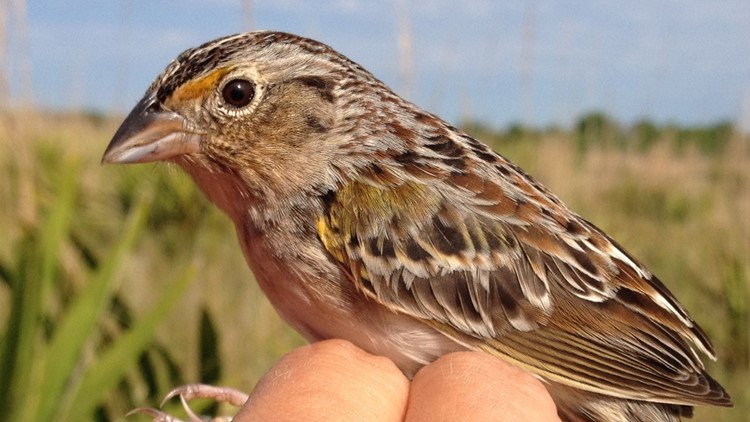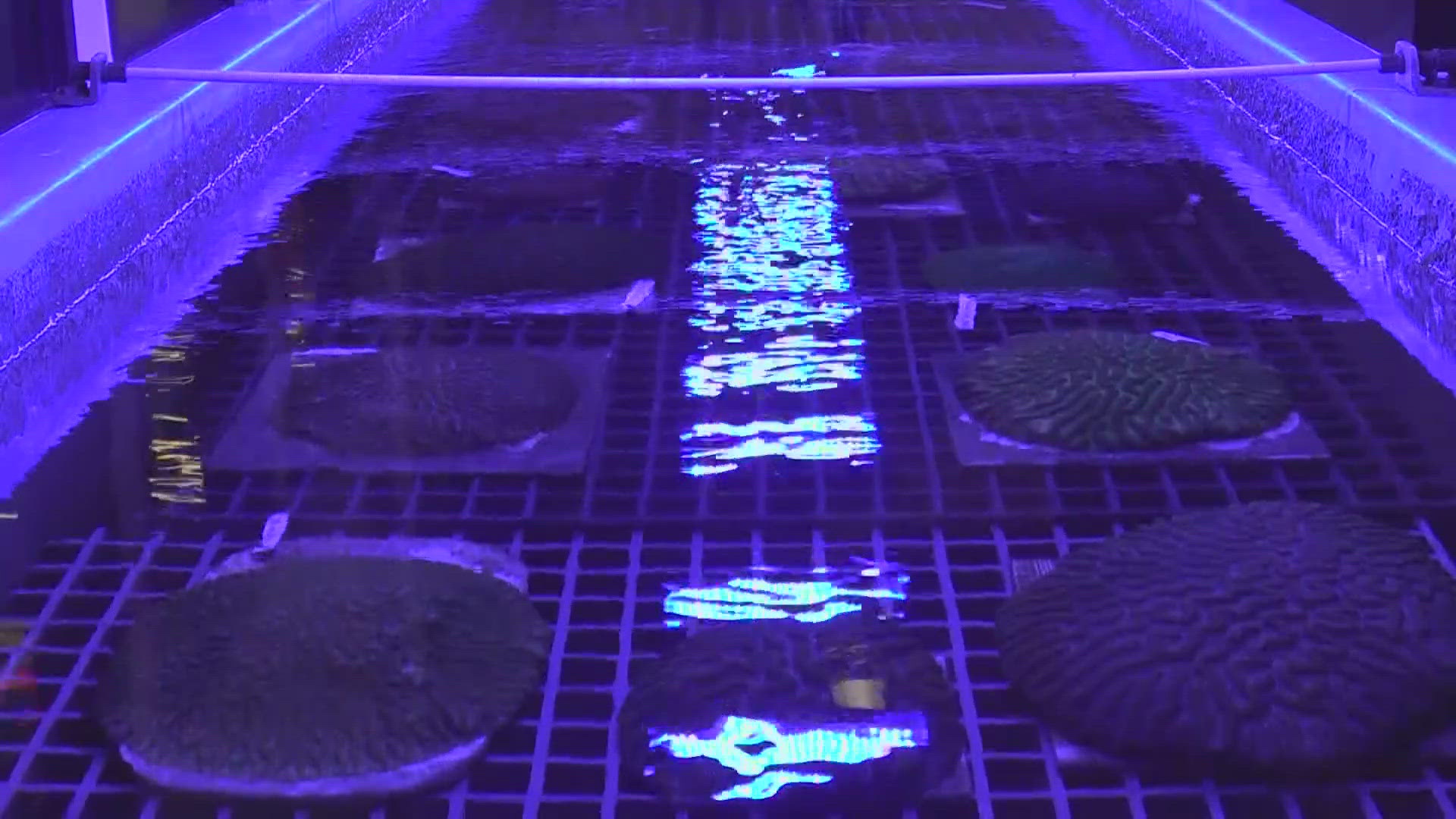FLORIDA, USA — On Wednesday, June 1, the 501st grasshopper sparrow finished its recovery from White Oak Conservation, along with 12 other sparrows, and was released in the wild of the central Florida prairie.
Due to habitat loss and other factors, the Florida grasshopper sparrow was on the decline prior to 2019.
The Florida Fish and Wildlife Conservation Commission said in a news release if they did not intervene to help the bird, then the sparrow may have gone extinct.
“Along with other important conservation measures, such as habitat management and nest protection, the conservation-recovery and release program has had a clear positive impact on the Florida grasshopper sparrow population at the release site,” Juan Oteyza, lead sparrow research scientist at FWC, said.
“We are incredibly happy with these results but Florida grasshopper sparrows are still critically endangered and therefore we must stay committed to our conservation efforts to create a more resilient population.”
The first release of the grasshopper sparrow was in May of 2019 and the FWC said they have seen a steady increase in the population by 84%.
In 2020, biologists discovered the released birds were breeding with other wild sparrows.
Some offspring created by released birds also became breeders, biologists detected in 2021.
According to the release, 65% of the birds that were produced in the wild at the release site from the 2020 and 2021 breeding seasons were from nests that had at least one parent from the recovery program.
“We are excited about the progress the program has been making over the past few years,” Mary Peterson, endangered species recovery biologist for the Service, said. “Many of the lessons we have learned with the Florida grasshopper sparrow could be applied to other Florida imperiled species, such as the endangered Cape Sable seaside sparrow, or other grassland birds.”
Six thousand acres in the DeLuca Preserve in Osceola County have been conserved strictly for sparrow habitat and is one of the largest known breeding populations of the bird.
“This is a once-a-generation gift of land, 27,000 acres,” Foundation president and CEO Andrew Walker said. “Conserving this land was a key component in pulling the Florida grasshopper sparrow back from the brink of extinction.”
To learn more about the recovery of the Florida grasshopper sparrow, click here.



